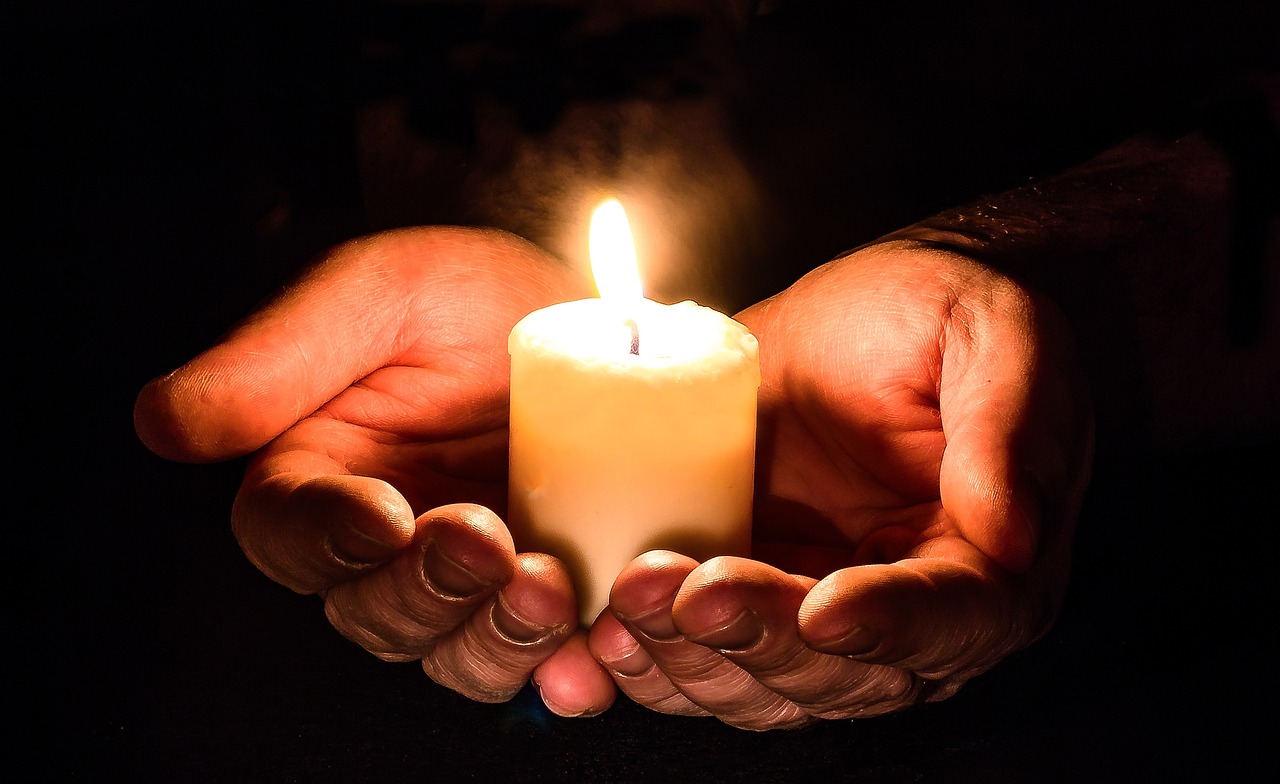In a world filled with constant noise and distractions, finding moments of silence can be a challenge. However, there is a powerful form of prayer that is often overlooked – the prayer of silence. This article explores the idea of learning to listen in the presence of God, drawing inspiration from Psalm 62:1. Discover how embracing moments of stillness can deepen your connection with God and open your heart to His guidance and presence.

This image is property of pixabay.com.
Understanding the Concept of Silence as Prayer
Silence, often underestimated and overshadowed by words and noise, holds a profound power when it comes to prayer. In the hustle and bustle of our daily lives, finding moments of stillness allows us to connect with the divine on a deeper level. In this article, we will explore the concept of silence as prayer and how it can transform our spiritual journey.
The Power of Silence in Prayer
Silence holds a unique power in prayer. It allows us to quiet our minds and open our hearts to receive guidance and wisdom from a higher source. When we enter into a state of silence, we create a space for the divine to speak to us in a way that words cannot capture. It is in this silent communion that we can truly listen and engage with the presence of God.
Biblical References to Silence as a Form of Prayer
Silence as a form of prayer is not a new concept; it has been practiced by people of faith for centuries. Throughout the Bible, we find references to silence as a means of connecting with the divine. One such reference can be found in Psalm 62:1, which says, “For God alone my soul waits in silence; from him comes my salvation.” This verse reminds us of the power of waiting on God in silence, trusting in His deliverance and guidance.
Exploring Psalm 62:1 as a Guide to Silence in Prayer
Psalm 62:1 provides a beautiful guide to incorporating silence into our prayer practice. By waiting on God in silence, we cultivate patience and surrender, acknowledging that our salvation and answers come from the divine. This verse invites us to approach prayer not only with words but also with moments of stillness, allowing God to work in us and through us.
Benefits of Engaging in Silent Prayer
Engaging in silent prayer brings a multitude of benefits to our spiritual journey. It goes beyond our desire to communicate with God; it deepens our connection with the Divine, enhances our spiritual growth, and helps us find peace and solace in the midst of chaos.
Deepening One’s Connection with God
Silent prayer allows us to cultivate a deeper connection with God. In the silence, we create a space to listen to God’s voice, to discern His guidance, and to feel His presence within us. It is through this intimate connection that our relationship with the divine deepens, bringing us closer to God and experiencing His love in a profound way.
Enhancing Spiritual Growth and Self-Awareness
Silent prayer is a powerful tool for spiritual growth and self-awareness. When we engage in regular moments of silence, we become more attuned to our inner selves and the promptings of the Spirit. It is in this place of stillness that we can reflect on our lives, our actions, and our relationship with God, leading us to a deeper understanding of ourselves and our purpose.
Finding Peace and Solace in the Midst of Chaos
In a world filled with noise and busyness, silent prayer offers a haven of peace and solace. When we take the time to enter into silence, we can release our worries, anxieties, and stress, allowing God’s peace to wash over us. In the stillness, we discover a refuge where we can find rest for our souls and experience a sense of calm in the midst of life’s challenges.
Developing the Practice of Silent Listening
To fully embrace the transformative power of silent prayer, it is essential to cultivate the practice of silent listening. By preparing ourselves, creating a conducive environment, and implementing practical tips, we can enhance our ability to be present and attentive in the silence.
Preparing Oneself for Silent Prayer
Preparing oneself for silent prayer involves setting aside dedicated time and creating a mindset of openness and receptivity. Find a quiet and comfortable space where you can sit or kneel in silence. Begin by taking a few deep breaths, releasing any tension or distractions. As you enter into prayer, consciously let go of any preconceived expectations or agendas, allowing yourself to be fully present in the moment.
Creating a Conducive Environment for Silence
Creating a conducive environment for silence is vital in establishing a practice of silent prayer. Choose a space that is free from distractions, such as noise, technology, and interruptions. Consider lighting a candle or playing soft instrumental music to create a peaceful ambiance. Surround yourself with objects that remind you of the divine, such as sacred texts, symbols, or artwork that inspire and uplift your spirit.
Practical Tips for Cultivating Silence in Prayer
Cultivating silence in prayer requires intentionality and practice. Here are some practical tips to help you navigate the silence:
-
Start small: Begin with shorter periods of silence and gradually increase the duration as you become more comfortable.
-
Use a focal point: Choose a word or phrase, known as a “mantra,” to focus your thoughts and bring your awareness back to the present moment when distractions arise.
-
Embrace silence in daily activities: Seek moments of silence throughout your day, such as during a walk in nature, while doing chores, or during your commute. Take these opportunities to practice stillness and connect with God.
-
Journaling: Reflecting on your silent prayer experiences through journaling can deepen your understanding and help you track patterns or insights that arise during your time of silence.
Overcoming Challenges in Silent Prayer
Silent prayer is not without its challenges. As we enter into the silence, distractions and wandering thoughts can arise, causing discomfort and a sense of resistance. However, by addressing these challenges head-on and finding motivation and perseverance, we can overcome them and experience the fullness of silent prayer.
Dealing with Distractions and Wandering Thoughts
Distractions and wandering thoughts are common obstacles in silent prayer. When we sit in silence, our minds often stray to mundane concerns, to-do lists, and worries. It is essential to acknowledge these distractions without judgment and gently bring our focus back to the divine. One helpful technique is to imagine each distracting thought as a cloud passing by, allowing it to drift away as you refocus your attention on God.
Addressing the Discomfort of Silence
The discomfort of silence can be unsettling, especially in a culture that values productivity and constant stimulation. It is natural to feel restless or uneasy when faced with silence, but it is in these moments of discomfort that growth often occurs. Embrace the discomfort as an opportunity to surrender control, to let go of the need for constant activity, and to allow God to work in the silence.
Finding Motivation and Perseverance
Silent prayer requires motivation and perseverance. It can be challenging to remain committed to a regular practice, especially when the results may not be immediately apparent. However, by focusing on the long-term benefits and staying connected to a supportive community or spiritual mentor, we can find the motivation to persevere through the challenges and experience the profound effects of silent prayer.

This image is property of pixabay.com.
Guided Reflections and Meditations for Silent Prayer
Incorporating guided reflections and meditations into our silent prayer practice can enhance our spiritual journey and provide structure and inspiration. Utilizing scripture, devotional resources, and other contemplative practices can deepen our connection with God and guide our hearts and minds during moments of silence.
Utilizing Scripture and Devotional Resources
Scripture and devotional resources offer a wealth of wisdom and inspiration for silent prayer. Select passages that resonate with you and reflect on their meaning in the silence. Meditate on the words, allowing them to penetrate your heart and serve as a bridge between you and God. Devotional books or online resources can also provide guidance and prompts for reflection during silent prayer.
Exploring Guided Reflections and Meditations
Guided reflections and meditations are valuable tools for those seeking structure and guidance in their silent prayer practice. These resources provide prompts, visualizations, and affirmations that can help focus the mind and deepen the spiritual experience. Explore books, podcasts, or online platforms that offer guided reflections specifically designed for silent prayer.
Incorporating Silence into Existing Prayer Practices
If you already have established prayer practices, consider incorporating moments of silence into your existing routine. Whether it is before or after spoken prayers, during a particular phase of your prayer routine, or as a separate practice altogether, integrating silence into your existing prayer habits can enhance your spiritual journey and allow for a deeper connection with God.
Experiencing God’s Presence in the Silence
As we embark on the journey of silent prayer, we open ourselves up to experience the presence of God in profound and transformative ways. Through silent listening, we can listen for God’s voice in the stillness, discern spiritual insights and wisdom, and encounter divine love and peace.
Listening for God’s Voice in the Stillness
In the silence, we create space for God to speak to us. By attuning our hearts and minds to His presence, we can tune into His voice, which often speaks softly and gently. It may be a thought, an impression, or a deep sense of knowing that arises during the silence. Cultivating a posture of openness and receptivity allows us to hear God’s voice and receive His guidance.
Discerning Spiritual Insights and Wisdom
Silent prayer is a fertile ground for spiritual insights and wisdom. As we enter into the silence, we create a space for divine inspiration and revelation to unfold. This can manifest as clarity about a particular situation, a deep understanding of ourselves or others, or a sense of purpose and direction. By remaining open and attentive, we can discern these insights and allow them to shape our lives.
Encountering Divine Love and Peace
In the silence, we encounter the unconditional love and peace of God. As we let go of our thoughts, worries, and distractions, we create space to be embraced by divine love. It is in this embrace that we find solace, healing, and a deep sense of belonging. Let the silence envelop you, and allow yourself to rest in the presence of God’s love and peace.

This image is property of pixabay.com.
Silent Prayer in Different Spiritual Traditions
Silent prayer is not limited to a specific religious tradition; it transcends boundaries and can be found in various spiritual practices. Understanding how different traditions approach silent prayer can enrich our own practice and help build bridges of understanding and respect.
Silent Prayer Practices in Christian Traditions
Silent prayer is deeply rooted in the Christian tradition. It can be found in contemplative practices such as centering prayer, lectio divina, and the practice of the Jesus Prayer. These practices invite individuals to cultivate silence as a means of connecting with God, listening to His voice, and deepening their relationship with Him.
Silence as a Form of Meditation in Eastern Philosophies
Silent prayer is also prevalent in Eastern philosophies and religions such as Buddhism and Hinduism. These traditions emphasize the cultivation of inner stillness and silence as a means of transcending the limitations of the ego and connecting with a higher consciousness or divine presence. Practices such as Vipassana meditation and Zazen encourage individuals to enter into silence to attain enlightenment and deepen their spiritual awareness.
Comparing Silent Prayer in Various Religious Contexts
While there are unique aspects to silent prayer within different religious traditions, a common thread can be found: the call to silence as a form of prayer and connection with the divine. Although the language, rituals, and theological nuances may differ, the essence of silent prayer unites diverse spiritual paths, serving as a testament to the universality and power of stillness in our spiritual lives.
Silent Prayer as a Daily Spiritual Discipline
Incorporating silent prayer into our daily routines empowers us to make it a consistent and transformative spiritual discipline. By intentionally setting aside time each day, establishing a regular practice, and sustaining the benefits, we can cultivate a lifelong commitment to the practice of silent prayer.
Incorporating Silent Prayer into Daily Routines
In the midst of our busy lives, it is crucial to carve out time for silent prayer. Consider integrating it into your daily routine, whether it be in the morning, during a lunch break, or before bed. By making it a non-negotiable part of your day, you create a habit that becomes second nature, allowing you to experience the transformative power of silence consistently.
Establishing a Regular Practice of Silence
To establish a regular practice of silent prayer, consistency is key. Set a specific time and duration for your practice, start small, and gradually increase the time as you see fit. Consider using reminders, such as alarms or calendar alerts, to ensure you stay committed to your practice. By making it a priority and showing up consistently, you lay the foundation for a lasting and fulfilling practice of silent prayer.
Sustaining the Benefits of Silent Prayer
To sustain the benefits of silent prayer, it is essential to integrate the lessons and insights gained from these moments of stillness into our daily lives. Reflect on the guidance received during silent prayer and actively seek ways to apply it in your relationships, work, and personal growth. By aligning our actions with the wisdom gained in the silence, we carry the transformative power of silent prayer with us throughout our day.

Silent Prayer Communities and Retreats
Engaging in silent prayer alongside a supportive community can deepen our practice and provide invaluable companionship on the spiritual journey. Joining or creating silent prayer groups and participating in silent retreats and contemplative communities can offer a space for shared silence, learning, and growth.
Joining or Creating Silent Prayer Groups
Joining or creating a silent prayer group allows us to come together with like-minded individuals who are also seeking silence as a means of prayer. These groups typically gather at designated times to practice silent prayer collectively, often followed by a time of sharing and reflection. Sharing one’s experiences and insights within a community can provide support, encouragement, and accountability on the path of silent prayer.
Exploring Silent Retreats and Contemplative Communities
Silent retreats and contemplative communities provide an immersive experience of silence, fostering an environment conducive to deepening our prayer practice. Retreats may range from a few days to several weeks, offering structured periods of silence, spiritual teachings, and guidance from experienced facilitators. Contemplative communities create a space where individuals can live in intentional silence, fostering an atmosphere of contemplation and support.
Sharing the Transformative Journey of Silent Prayer
When we engage in silent prayer within a community, we not only deepen our own practice but also support and inspire others on their journeys. The transformative power of silent prayer is amplified when shared with others, creating a collective energy that empowers and uplifts everyone involved. By sharing our stories, insights, and struggles, we cultivate a spirit of openness, connection, and mutual growth within the silent prayer community.
Silent Prayer as a Lifelong Journey
Silent prayer is not a destination; it is a lifelong journey of growth, deepening, and embracing the unknown. As we continue to engage in silent prayer throughout our lives, we evolve, adapt, and navigate the ever-changing seasons of our spiritual path.
Continuing Growth and Deepening in Silent Prayer
Silent prayer is an ongoing practice that allows us to continue growing and deepening in our relationship with the divine. Just as we are constantly evolving as individuals, so too does our understanding and experience of silent prayer. Embrace the opportunities for growth, and remain open to new insights and ways of connecting with God in the silence.
Adapting the Practice to Different Seasons of Life
Throughout our lives, we experience different seasons that may impact our ability to engage in silent prayer. Whether it be the demands of a busy career, the responsibilities of raising a family, or the challenges of health or aging, each season calls for adaptation and flexibility in our practice. Explore ways to incorporate silence into your life in a way that aligns with your current circumstances, trusting that even small moments of stillness can be transformative.
Embracing the Unknown and Uncertainty in Silence
Silent prayer often invites us to step into the unknown and sit with uncertainty. In the silence, we release our need for answers, control, and clarity, and instead, surrender to the divine presence. Embrace the unknown as a catalyst for growth and trust that God’s wisdom and guidance will emerge in due time. Embracing the uncertainty in silence allows us to develop resilience, faith, and a deeper sense of surrender to the divine plan.
In conclusion, silence as prayer holds immense power and transformative potential. By understanding the concept of silence in prayer, embracing its benefits, and developing the practice of silent listening, we can experience the presence of God in profound ways. Overcoming the challenges, engaging in guided reflections, and exploring different spiritual traditions further enriches our silent prayer journey. By making silent prayer a daily spiritual discipline, engaging in silent prayer communities and retreats, and viewing it as a lifelong journey, we deepen our connection with God and embrace the transformative power of silence.








